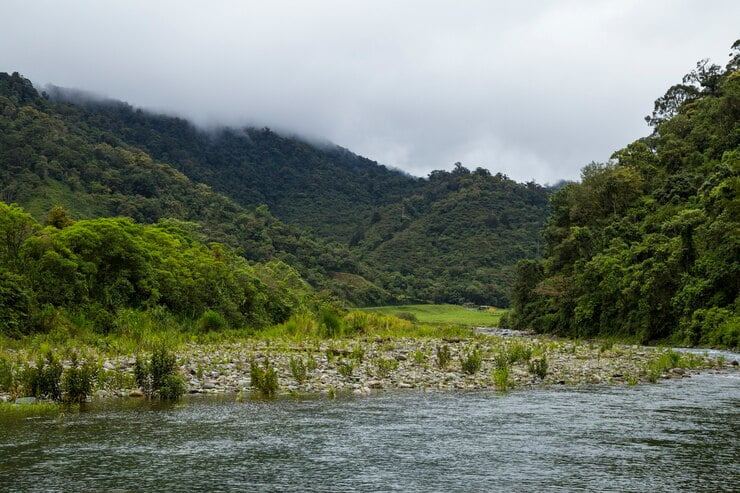No products in the cart.
ALLEPPEY – Backwater Haven
Kerala - ‘God’s Own Country’
Backwater Haven
‘God’s Own Country’ Kerala has rightly established itself as one of the world’s most enduring holiday destinations these past decades. It’s no surprise that the state was ranked amongst the world’s best destinations to visit in 2023.
At the heart of this lavish, lush landscape, shaped by its twin monsoons is its unique backwaters network, which has been transformed into one of the most sellable products in the global tourism market for the state.
Historically Alleppey, the port town, nestled by the Laccadive Sea, had brisk trade ties with ancient Greece and Rome; it was also reliant on its trade with the west in the Middle Ages. Alleppey district was formed on the 17th of August 1957, being carved out of the erstwhile Kottayam and Kollam (Quilon) districts. Alappuzha district comprises six subdistricts or taluks— Kuttanad, Cherthala, Ambalappuzha, Karthikappally, Chengannur, and Mavelikkala.
Alleppey town, which was by now sulking in its suburban apathy was transformed by the redevelopment initiated by Raja Kesava Das, the then Diwan of Travancore during the reign of Dharma Raja Karthika Thirunal Rama Varma in the 18th century. Concerted efforts were made to divert the trade of Cochin to the new port facility he had created at Alleppey. The lighthouse here is the first of its kind on the shores of the Laccadive Sea. The port town became the financial nucleus of Travancore and its maritime activities were on the rise, facilitating the activities of the merchants and traders in Surat, Mumbai, and Kutch.
The back story of Kerala’s much-touted backwater cruises is rooted in a natural phenomenon that has become advantageous for both locals and global visitors. The narrative of this unique experience spills over from the historic spot of Alleppey/ Alappuzha, the jump-off point for the backwater cruises along these palm-fringed water channels. Alleppey and the backwater ecosystem are so intertwined it would be foolish to ignore their traditional linkages. So, when you come exploring the waterways, terra firma too has history and heritage to share in this pretty waterline township.
Strung along the legendary Malabar coast, Kerala’s backwater network is made up of about 1500km of canals, lagoons, rivers, and five lakes running parallel to the shoreline of the Arabian Sea. Amongst the lakes, Vembanad Lake is the biggie on the cruising itineraries for many travellers. Touristy pleasures aside this network is the lifeline of countless village settlements dotting the embankments and tiny islands, because of its interconnectedness in the hinterland. Just 62 km south of Kochi, Alleppey’s backwaters are interlinked with those of both Kochi and Kumarakom.
Lord Curzon’s ‘The Venice of the East’– Alleppey or “the land between the sea and the network of rivers flowing into it”, is a remarkable story of survival for the backwater communities who have learned to make a living of it in this beautiful but challenging water world. Fed by the waters of four important rivers: Pampa, Meenachil, Achankovil, and Manimala Kuttanad with its reclaimed land sells its amazing story for the world to ponder over. At the very heart of Alleppey district’s backwater ecosystem, Kuttanad has been a story of rare transformation as the local communities adapted their fishing and rice growing activities to these brackish waters. It has taken millennia for this vast quilt of emerald paddy fields to be stitched together with the silt and water from the networks of canals in this legendary ‘Rice Bowl of Kerala’. Alleppey district is also fabled for its traditional industries based on coir and coir products, seafood, handlooms, handicrafts, and toddy tapping from earliest times.
Bobbing on the placid waters at Alleppey are moored a collection of luxury houseboats (kettuvallam) alongside small fishing craft used by the locals. A cruise down the waterways offers photo ops aplenty of a life lived out by the water channels studded with travelling canoes, ferries, and traditional houseboats.
Exploring Alleppey town on foot helps put the backwater life into a richer context for the visitors looking for a more immersive experience. Kick into leisure mode as you walk the talk with the voluntary guides who are members of the inspirational initiative The Preserve Alleppey Project. Established in 2000 by the Lion Ladies Club of Alleppey, the project put the spotlight on these women who were determined to preserve, protect, and document the historic Alleppey town itself, which is considered the oldest well-planned town in the region.
The Preserve Alleppey Project is deeply committed also to helping safeguard the unique heritage of the backwater ecosystem. The walk offers an excellent opportunity to understand the canal system its role in shaping the ecology of the area and its impact on the local communities. You also get an opportunity to meet the local people in the Gujarati quarter on the heritage walk, which also covers the canal banks and an old wholesale market. The story of Preserve Alleppey Society is also a story of women coming together to make a difference and change the way people think within the community.
From Alleppey, you can take cruises for a one-night stint on Punnamada Lake, the venue of the annual Nehru Trophy Snake Boat Race. You can also cruise to Kumarakom, to Kottayam, to Thottappally, to Kidangara which covers Vembanad Lake and Pathiramanal Island; then there’s another one that takes you to Mankotta notable for its coir-making villages.
ACCOMMODATION
A wide array of accommodation options is available to suit all budgets. A luxury houseboat stay is an experience to remember.
ACCESS
Air: Cochin International Airport (75 km) and Trivandrum International Airport (151 km) are the nearest airports.
Rail: The nearest railheads are Kottayam and Kochi‘s Ernakulam Junction railway station
Road: KSRTC buses offer good connections from Alleppey to important cities in Kerala.
















